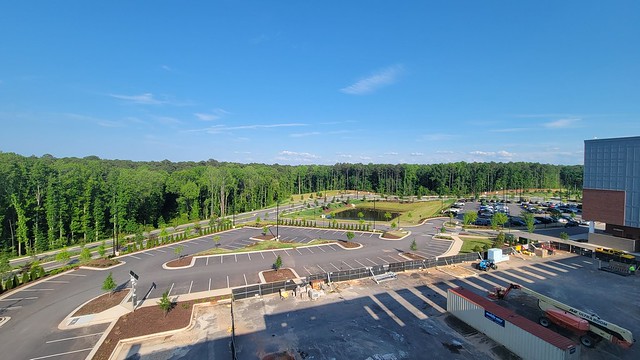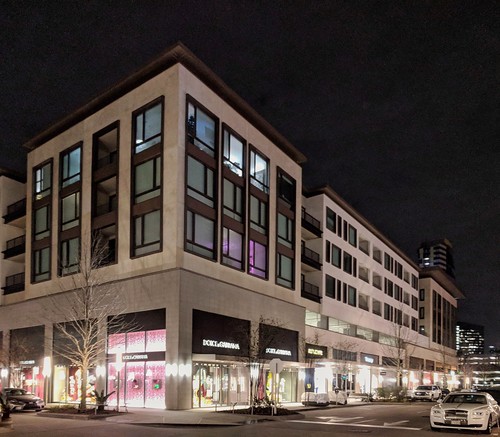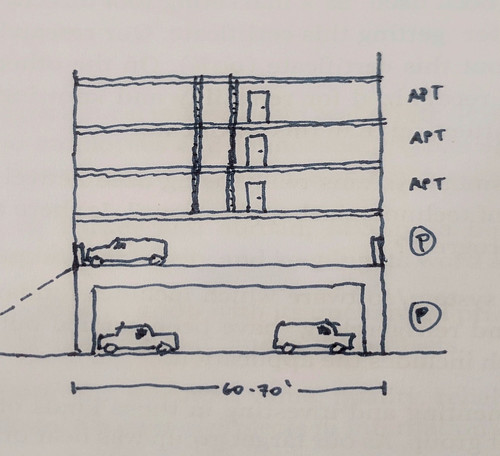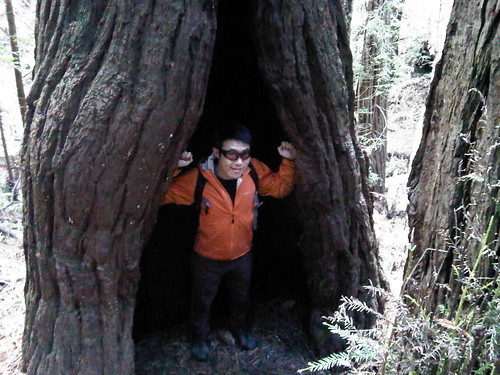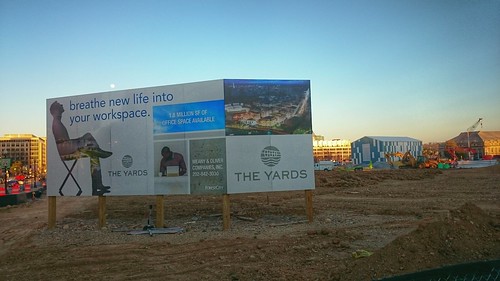
Site availability, not incentives, are of “paramount importance” to Amazon.
A lot of the early press around the Amazon HQ2 announcement zeroed in on the usual economic-development narrative of a company shopping around for incentives. Yet a close reading of the RFP reveals that incentives are actually a middling concern for Amazon.
The RFP reveals (as Benjamin Romano also writes) that Amazon feels that it’s outgrown Seattle; they feel as if they’ve hired everyone in Seattle who could work for them, and growth requires tapping into a new labor pool. The company isn’t hungry for cash; it needs people, space, and speed.
I’ve plucked out the various considerations listed in the RFP and rearranged them roughly in order of urgency:
“Paramount importance”
- “Finding suitable buildings/sites,” i.e., initial size of 500,000+ (up to 1.0 MSF) available in 2019, expandable nearby to 3.5 – 6 MSF over three phases and potentially up to 8 MSF beyond 2027
- Keep in mind that a high-rise office building takes about a year to build, so groundbreaking should occur by mid-2018
- For perspective: the TSA just awarded a build-to-suit contract for a 625,000 sq. ft. headquarters on a greenfield site in Springfield, Virginia, where the buildings are drawn, the developer has cash in the bank, the land is already cleared, and the office will open in late 2020
- “Optimal fiber connectivity”
“Must be” or “required”
- Close to a significant population center that can fill 50,000 jobs (many of them technical)… Direct access to significant population centers with eligible employment pools
- Strong university system
- Compatible cultural and community environment, diverse population, higher ed, officials eager to work with company
“Critical”
- Highly educated labor pool
- Initial and ongoing costs
- Travel/logistics for employees and to other facilities
- Site has access, utilities, zoning
“High-priority considerations”
- Stable and business-friendly environment and tax structure
“Key factor”
- Travel time to major highways and arterial roadway capacity
“Significant factors”
- Incentives offered by state/province, local communities
“Important”
- Near airport with daily flights to SEA, NYC, QSF, WAS
- Stable and consistent business climate (demonstrated via testimonials from other large companies)
“Ideally”
- <30 miles to major city
- <45 minutes to international airport
- <1-2 miles to highways
- 0 miles to mass transit (rail or bus)
“Preference for”
- Metro with 1M+ people
- Urban or suburban location to retain/attract technical talent
- Communities that think big
“Want to”
- Employees will enjoy living there, recreation, education, high quality of life
“Could be, but does not have to be”
- Urban/downtown
- Similar layout to Seattle campus
- Development-prepped site
Site-specific statistics that must be provided, and therefore will be considered:
- General site information
- Ownership structure, notably if government owned
- Current zoning
- Utilities present
- Total incentives offered and terms, if legislation is needed, estimate uncertainty thereof, timeline
- Highway, airport travel
- Transit options, including bike and pedestrian
Regional statistics that must be provided, and therefore will be considered:
- Labor pool information
- Ability to attract talent regionally
- Opportunities to hire software engineers
- Recurring sourcing for software engineers
- “All levels of talent”
- Executive labor pool
- Existing and potential university-employer partnerships
- List of higher ed institutions with relevant degrees
- Number of recent grads
- K-12 computer science programs
- Transit and transportation options
- Traffic congestion ranking
- Quality of life
- Recreational opportunities
- Diversity of housing options
- Availability of housing locally
- Housing prices
- Crime data (“also”)
- Cost of living (“also”)
So, what locations make sense on the East Coast?
The RFP only calls out two criteria as “of paramount importance”: fiber data service, and having a shovel-ready site of 0.5-1.0 million sq ft, with on-site or adjacent expansion to 8 MSF.
The site not only should be zoned already, it needs to have utility capacity in place. The 2019 timeline leaves zero time for rezonings, public hearings, geological surprises, soil contamination, lease buy-outs, tenant relocation, wish-upon-a-star transit lines, etc. It means either clean dirt that’s ready to go, or a monster of a cold-shell building that already has construction crews hard at work.
It’s hard to overstate how enormous this project is. It’s more than the total commercial (retail, office, hotel) space that now exists at National Harbor. It’s more than the total commercial space contemplated in the long-range plans for Downtown Columbia or White Flint — much less what’s already gone through zoning approvals. It’s bigger than the entire Capital One campus plan at the McLean Metro, or Under Armour’s Port Covington campus plan in Baltimore. It’s more office space than even what could be built under the Navy Yard area’s zoning. It’s twice as big as the Pentagon.
The Greater Washington office market is the country’s third biggest, after NY and Chicago (other large cities’ employment bases are more industrial). This is one of a few regions in America where developers regularly propose 1+ MSF office sites — largely hoping for giant federal leases. (Granted, cities like Atlanta, Chicago, and Dallas often give away zoning for the asking; Toyota doubled its Plano campus’ size during negotiations.)
Most local sites might have shovel-ready space for Phase 1, but not necessarily plans in place to accommodate phases 2-3-4. Only two come to mind: Tysons Corner and Crystal City-Pentagon City.
- Tysons: 50,000 jobs is a 50% increase on Tysons Corner’s current employment, and 25% of the 2050 “buildout” number there. As far as I can tell, no one owner at Tysons can accommodate the full 8 MSF buildout, but sites could be combined at two locations:
- McLean station: Scotts Run, next to Cap One, is the largest single project at Tysons with approvals for about 4.5 MSF of office. Another 0.5 MSF has been approved in two parcels to its southwest, and the Mitre campus can also expand.
- Tysons Corner station: Lerner has entitlements for an additional 2.3 MSF of office south of the Galleria, Arbor Row has approvals for another 1.1 MSF to its north, and Macerich has approval for another 0.5 MSF office tower south of the station. The Galleria itself hasn’t been rezoned yet, although one idea that’s been presented adds about 1 MSF of office; there are also sites to its west (closer to Greensboro station) that would still be within walking distance.
- Crystal and Pentagon City have seen 20,000+ federal jobs in defense and homeland security depart since BRAC; there’s over 2 MSF of vacant office available today. What’s especially notable is that most of the offices are already controlled by one very interested landlord (JBGS). There aren’t many closer analogues anywhere in America to their partnership with Vulcan in South Lake Union: one deep-pocketed owner, one neighborhood, and a placemaking/planning framework that forecasts tremendous growth.
- [Updated 13 March 2018] From a JBGS filing: “Our holdings alone can accommodate Amazon’s entire long-term space requirement and we have a cost advantage over our competitors given the existing in-place parking and substantial infrastructure. Crystal City has plenty of capacity to accommodate Amazon or any large user looking for a sizeable home in an urban market.”
- Crystal City has long-term plans to renew the existing buildings and expand office space by about 5 MSF net, including active or expired plans for 0.7 MSF at the vacant 1900 Crystal and 0.65 MSF at 223 23rd St. There’s also about 1 MSF vacant today, and over 1 MSF in 2018-2019 lease expirations that could free up sites for incremental additions.
- Pentagon City has an entitled site for 2 MSF at the shovel-ready PenPlace, and two adjacent sites are also approved for ~1 MSF of office apiece: Brookfield’s TSA/DEA block (leases are up in 2018-2019) and Kimco’s Costco site.
- Potomac Yard has a power center to redevelop, where JBG is a partner and could build 1.9 – 5.3 MSF of office after the new Metro station opens after 2020. (There’s vacant land in Arlington, too, but it’s owned by Lidl’s headquarters.)
These sites compare favorably to other leading East Coast contenders: Schuylkill Yards or UCity Square in Philadelphia and Seaport Square in Boston are by far those cities’ largest sites, with superior access to intercity transport and higher ed, but both are approved for only ~3 MSF of office. (The Philadelphia sites are adjacent to air-rights parcels that may be available later, and for which plans have been floated, but the metro area has a considerably smaller technical talent pool.) The Boston submission ended up focusing on the Suffolk Downs racetrack, which is centrally located within the region but clear across downtown from the region’s plush suburbs and educational institutions.
The obvious sites in downtown Atlanta, like the Gulch, are still visions rather than plans, with fragmented ownership and poor infrastructure/access. It appears 2 MSF of Class A office is vacant downtown, but by far the largest and highest-profile block is Bank of America Center, a mile north — and much closer to Tech and Midtown. Too bad the Gulch isn’t on the other side of downtown.
Colossal loft conversions might fit the bill elsewhere, as with the warm shell of Chicago‘s Old Main Post Office — one of the country’s biggest buildings at 2.5M sq. ft., and so impossibly huge that its size had been the stumbling block to several previous plans. It happens to sit astride a subway line, highway, and fiber lines, and within a block are three approved plans for five new build-to-suit office towers.
It could also spread across a few six-figure spaces on the Brooklyn waterfront; although the area’s comparatively small office market isn’t promising, industrial space is relatively plentiful.
The Dallas Morning News’ old printing plant and the mostly-empty Dallas Union Station building have a combined 425,000 square feet, and happen to sit next to not just many empty lots but also an iconic sphere thing.
Central city or suburbs?
Regarding HQ1, Bezos is on record saying, “We could have built a suburban campus… I think it would have been the wrong decision.” Amazon VP for global real estate John Schoettler echoes: “Jeff said the type of employees we want to hire and retain will want to live in an urban environment…. We could have gone to the suburbs, and we could have built a campus.”
Bezos was also heavily involved in siting the Washington Post’s new office. A key consultant says: “One discipline Bezos brought in was money… He saw [a fringe site] as a lot of empty holes, not urban-istic.”
Update May 2018: Arlington, TX confirms they were told “it wanted an already-developed urban core.”
Which locations have a deep enough talent pool to draw from?
A large labor force, primarily technical but also executive, is another “required” factor. Crain’s Detroit points out that “Amazon’s biggest business impediment is labor”: it has over 6,000 current vacancies in Seattle, 75% of which are technical. Real estate brokerage CBRE recently published a report, based on BLS data, comparing cities’ “tech talent” (“software developers and programmers; computer support, database and systems; technology and engineering related; and computer and information system managers”).
Three of CBRE’s charts stood out to me:
- 50,000 Amazon employees will include tens of thousands of software engineers, yet only 10 metro areas have more than 100,000 tech employees to begin with. For context, consider Amazon’s current need for 4,500 technical employees: hiring those people in Pittsburgh today would require poaching 11% of its tech workforce, 9% in St. Louis, or 7% in Raleigh. In Toronto or New York, you’d only have to convince 2% to leave their jobs, and in the Bay Area or Washington-Baltimore it’d be less than 1.5%.
- A key advantage for DC, Boston, or LA is that only these three regions export CS graduates in large numbers. Seattle, Atlanta, DFW, and the Bay Area already have to import thousands of tech employees a year; since there’s only a limited pool willing to pick up and move, recruiting thousands more every year could be that much more difficult. (The RFP specifically asks about university hiring partnerships.)
- Regarding costs, CBRE did an interesting analysis looking at the cost of running a 500-employee technology office. DC, Boston, and Seattle all come in at about the same price; SF is about 20% more. The big winner in that table is Toronto, with its large workforce and low wages — which more than offsets the relatively high cost of real estate there.









